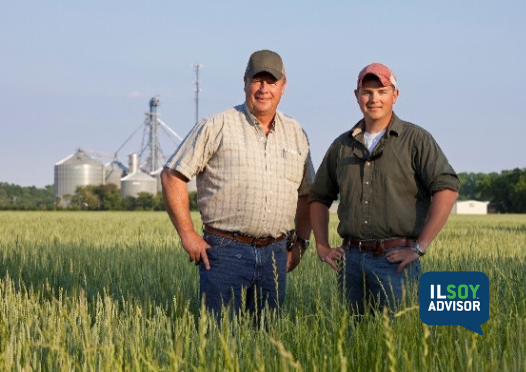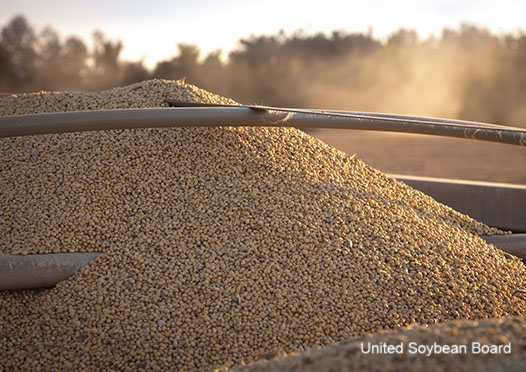ILSOYADVISOR POST
Conducting Quality On-Farm Research
Digital ag platforms such as Climate FieldView have made it easy for farmers to conduct research on their own acreage. These tools allow growers to verify the results of industry and third-party testing and implement experiments to answer other questions they may have. This recent ILSoyAdvisor blog discusses some of the types of questions you may want to answer in your fields. While it is true that the best results are those gathered in the specific conditions of your own farm, there are a few considerations that should be followed when setting up an agronomy trial.
If you took a class which discussed experimental design in high school or college, you may remember the elements of a quality experiment. These factors should be incorporated into any trial to ensure the reliability of the results. First, there needs to be a control treatment, or reference point for comparison. This is the standard practice without additional treatments. Additionally, the treatments should be replicated and randomized.
Control
In any experiment, there needs to be a baseline for comparison. In agronomic trials, this should be the standard practice or in the case of evaluating a specific crop protection or other foliar product, an untreated strip. The untreated area should also be repeated across the field. It is easy to leave a single check strip and draw conclusions based on the results, but this could lead to an expensive inaccurate conclusion. If using check strips, be sure to include several in different areas of the field.
Replication
Replication is simply the repetition of treatments across an experimental area, in this case a field. It is important because it helps increase the accuracy of results by repeating the treatment in various areas. We are all very familiar with the amount of variation across a field, even within the same soil type. High areas, low areas, field edges, and other factors such as disease inoculum, compaction, or shade will influence results. By replicating a treatment within a field as many times as feasible, we can better account for the effect of the treatment across multiple microenvironments.
Randomization
Randomization is critical to generating quality data from an experiment. We have already discussed field variation, and results can be easily influenced by misplacement of the treatments or repeating the same pattern of treatments across a field. Some comparisons are very difficult to completely randomize such as comparing two varieties with a split planter in a field. However, if comparing multiple treatments such as fungicide applications, the best quality data will come from a field where the different fungicides are not applied in the same order each time.
Other considerations and watchouts
In the case of agronomic research, it is best to keep things simple. Although it may be tempting to include multiple parameters such as varied population with other factors, this can make the data difficult to analyze. Without advanced experimental design and statistical analysis, it is very difficult to understand the individual contributions of various factors to a yield increase. Unless you are specifically looking at the interaction between two inputs (fungicide and insecticide for instance), it is always best to simply compare one treatment to another. If designing an experiment with multiple factors such as fungicide and insecticide, the best data would come from a trial that also has the treatments individually. In this example, the best results would be gathered from repeating a control (unsprayed), fungicide alone, insecticide alone, and fungicide + insecticide in multiple strips or blocks across a field. As you can see, when trying to analyze multiple factors, things can become complicated fairly quickly.
Finally, be careful with conclusions from a single field in a single year. Even a well-designed experiment can lead to an incorrect conclusion from unique growing conditions. Field history can have a major impact. For instance, we would expect a large response from soybean inoculants in a field that had several years of continuous corn prior. We would not expect to see that same yield benefit in a regularly rotated field. Growers are also very aware of the impact of weather on soybean production. An input that has a major impact in a single year may not the next. The best results are those gathered across fields and years.
Analyzing your data
This is the fun part! Today’s digital platforms make it easy to analyze and summarize results. When generating field reports, be careful to exclude areas of the field that may be seriously affected by other factors, such as drowned out or replanted areas. Whenever possible, combine the data with other fields or growing seasons.
As I mentioned earlier, the best agronomic information comes from your own operation. However, this is only true when the data gathered is quality data. By following the guidelines outlined above, you can improve the quality of results from your own agronomic trials. Be creative and evaluate the factors that make the most sense in your operation. Have fun and happy planting!





Comments
Add new comment